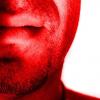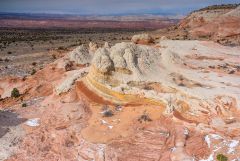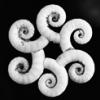Search the Community
Showing results for tags 'A7r'.
-
Is there a way to change picture profile to slog aka PP7 in the A7r / ILCE-7r ?
-
The original A7r in my experience is very prone, especially with long-ish lenses, to disastrous shutter shock that will often render the pictures unusable. This happens especially with the lightest lenses. In my case two of the worst offenders were the Leica R 180 and the Minolta AF 100-300 Apo. Anything shot at less than 1/320s (and up to a few seconds) was bound to show, 90% of the times, substantial vibration-induced blurriness. Just to be clear, because I know this is a debated argument: I normally shot using either a remote (wireless) release or the 10s self-timer, using an heavy tripod (if I remember correctly more or less 3.5Kg, without the head) plus an 8cm wide Arca ball head (more or less another kg) that is almost as large as the A7r itself. The same setup was more than enough to support my 5x7" large format camera without a hitch, but wasn't enough for the Sony! But now I finally found a solution that doesn't involve adding the grip or other kind of weights to the camera. You can read the details here, should you be interested: How to: solve the Sony A7r shutter shock, for good but basically I just jammed cork stripes between the L-bracket and the camera (under the vertical "arm" as well). Please ignore the small differences in "grain", I had to change the ISOs in order to keep exposure (and aperture) constant while changing the shutter speeds. All shot with the Minolta AF 100-300 Apo @ 300mm Now I can shoot at any shutter speed with impunity, and have to take precautions only in the same conditions that apply to other cameras as well, like heavy winds etc. (and in this case I use, also illustrated in the above mentioned article, a bike inner tube). Hope this can be of help to other A7r owners that have no intention of splurging another 3000€ on a new camera body, nor have more the patience to wait for Sony to release what should have been a fairly simple firmware upgrade to insert a small delay between the push of the shutter button and the start of the first curtain (like Olympus and others did to fight, successfully, this exact phenomenon).
- 18 replies
-
- A7r
- shutter shock
-
(and 1 more)
Tagged with:
-
Just unwillingly tested the durability of my A7r, dropping it from more than 1m on a marble covered concrete floor while changing lenses... From the sound it made I though at first I'd cracked one of the stone panels. Immediately after the fact the shutter looked like it was bent and closed shut. I'll let you imagine the kind of words that came to my mind. Hint: they were definitely NSFW! Just before starting to search for the address for the nearest repair center I tried to switch the camera on. After all if the damage was as sever as it appeared the worse had already happened and a new shutter would have been needed anyway. Instead the camera snapped the shutter open and started taking pictures like nothing happened. It was a close brush with death for the poor A7r...maybe my not so veiled menace to replace it with an all Fuji setup scared it straight!
-
This one is a lens for which there aren't many samples or blog posts about, so let's try to make up for that. It is very light and well balanced on the A7r: I even managed to shot with it at 1/4s without IBIS. Colors It has the usual Zeiss colors, possibly even more so than my other Contax glass. There is a tiny bit of CA, but Lightroom gets usually rid of it just using the automatic settings. Vignetting Like most extreme wide angles without a connection with the camera (meaning: lenses for which the processor in the camera compensate this automatically even for raw files) it does have quite a bit of vignetting (this was a yellow-ish ceiling; in actual pictures the effect is basically unnoticeable from f/8). But just shooting a blank, out of focus A4 sheet of paper I created a DNG Flat Field correction file for each aperture. As you can see this eliminates the problem entirely. Besides, in real subjects it is hardly noticeable, and quite often improves them IMO. First picture straight out of camera, second picture after correction with FlatField Lightroom plugin. The few remaining "shadows" are actually imperfections in the ceiling itself. f/4 f/5.6 f/8 f/11 Vignetting in real life To perfectly clear the vignetting you'll need to stop down to f/11, even though already from f/8 is pretty much gone (all images uncorrected). f/4 f/5.6 f/8 f/11 Sharpness The lens is decently (for a Zeiss, so really good for other manufacturers) sharp at f/4, and at its best already at f/5.6. f/8 is barely distinguishable from f/5.6 in terms of sharpness (less vignetting, though). It looses just a tiny bit of sharpening at f/16 and more so at f/22, but it is still quite usable even if it will require a tad more coarse (i.e. for example a radius of 1 instead of 0.5) sharpening. Great news for landscape photographers! It is super sharp in the center, pretty sharp at the borders, and reasonably sharp in the extreme corners. Not bad at all for an 18mm, IMO. Besides, it even sharpens up considerably at shorter distances (where, btw, you will most of the time have a subject with a lens this short unless you're shooting large landscapes). I've used it for a "grunge" (or "weird", if you prefer ) male portrait with a LED continuous light and at 1.600 Iso I had to add luminosity noise reduction not because of noise (there wasn't any) but to REDUCE the sharpness...otherwise the facial hairs looked over-sharpened even with the sharpening set at the Lightroom super conservative default level. Smearing and magenta cast I can't see any smearing or magenta shift at the borders, even on the snow. Flare It appears to handle flair from exceptionally well to exceptionally badly (see next post); thankfully most times all it takes is a minute change in framing to go from the latter to the former. Distortion Distortion, as you may already know given it is kinda of a legendary pros of this lens, is basically invisible. For now I'm quite satisfied with my purchase; it is not a Contax 21mm in terms of corner sharpness, and that I already knew, but neither it is a 21mm in terms of price, weight and size. For me the tradeoff is well worth the loss of a bit of quality for the possibility to actually have the lens with me, instead that at home in the camera closet.
- 16 replies
-
From the album: The Alien landscape of White Pocket
© Steven W Snyder 2018
-
- white pocket
- A7r
-
(and 2 more)
Tagged with:
-
Drove 1600 miles round trip (about 4 hours of it off-road) to visit White Pocket, AZ. A very strange alien planet type landscape. These shots were taken with my Sony A7r, sony 35mm 2.8, ISO 800, f5.6, that I mounted to my S1000 octocopter. More can be seen on my personal facebook page https://www.facebook.com/steven.snyder.790/posts/10209248471603589?pnref=story I notice the uploaded versions appear slightly soft on this page, possibly a little better on Face Book. Thanks for viewing Steve
-
Hi, I'm trying to use a 70mm Sigma macro using a Fotofiox pro Canon EF -> Sony E adapter. I'm having issues with the lens sometimes not talking to the body. It will take a couple of frames OK, then will just lock up, and I have to take the lens off to reset the body. I think the weight of the lens is pulling the contacts apart, but I can't get my Canon lens (24-105, heavier than the Sigma) to repeat the problem. Tried cleaning contacts etc. Anyone seen similar issues? Any suggestion very welcome! Phil
-
This wasn't exactly a cheap lens not even when new - if I remember correctly it used to cost something like 2.400€ in today's money or maybe even a tad more - , and it is still not a cheap lens even used: if you can find one, it will go anywhere from 500€ to 700€ and more. But it is worth every penny IMHO. It is compact, super sharp even wide open, with tons of micro-contrast and, typically for a Sonnar, it exhibit a beautiful bokeh. It is at its sharpest between 100 and 200mm, and according to the MTF data measured by Zeiss it should be a bit less sharp at 300mm, but I honestly haven't been able to spot the difference! At 300mm you will be more likely to loose sharpness because of the air between you and your subject if shooting from a distance than from anything else anyway. Look at the first picture: this kind of rendering is almost impossible to squeeze out from many other lenses, that will render the clouds soft and mushy even after a ton of post processing. This lens in my book has only a couple of faults: - it lacks a lens mount; you can probably get away without one, but it is not for the faint of heart. No big deal, there are cheap (~30€) aftermarket alternatives that work pretty good (even if then with the lens collar your lens will become a 135-300mm, because the collar locks on the first part of the lens). - wide open it might exhibit sometimes a strange "light arc" that is really difficult to get rid of in the threshold between the uniformly illuminated image and the start of the vignetting. You have to see it, it is difficult to describe, but it looks a bit like an arc of "positive" vignetting, i.e. of a lighter area instead of a shadowed one, some kind of overcorrection of the vignetting just before the proper vignetting starts. - not really a negative point for a 300mm lens of this quality, but while pretty compact (more so than many 70-200 lenses, even mf ones!) it is still fairly heavy at more than 900g. I use it on the A7r, 99% of the time on a tripod (the last shot was hand-held though) but it will be best mated with a body with IBIS for an easier time focusing and shooting at 300mm. P.s.: sorry for the compression artifacts on the 2nd shot, I can't see them in the exported image but they show up when I upload the image here...
- 4 replies
-
- Contax
- Vario-Sonnar
-
(and 5 more)
Tagged with:
-
I've bought my first fish-eye ever to use it for a specific project I've in mind. For now I'm just toying around with it to get a sense of the lens. For the same reason I've gone cheap and dirty, and bought a Russian Zenitar 16/2.8 instead of more expensive option. My reasoning has been that should I have not liked the results of the project, and subsequently aborted it, doing so I would have limited my expenses. It turned out that the Zenitar, or at least my copy, is a pretty good lens anyway, especially like many old optical schemes once you stop it down two or three notches. Don't fall into the old film habit: "a fish-eye has a depth of field so great that you don't have to focus" is BS. On sensors packed of pixels like basically any modern one the difference between small rotations of the focusing dial will show, you can be sure of that. A bit of CA remains at the extreme borders, but it is fairly easy to remove in Lightroom or PS. And the lens de-fishes beautifully (with a bit of a kind of "explosion effect" that is awesome to attract attention to your central subject) using the Lightroom profile for the Nikon 10.5 APS-c fish-eye or the Nikon 16 full frame fish-eye (the effect will vary slightly between the two profiles). Note: none of the following pictures have been de-fished. I've shown this last picture in color because it is easier to judge the overall quality of the image, but this is how I envisioned it (or pre-visualized, for Ansel-talk aficionados ):
-
NOTE: The above image was taken with the A7r, the Novoflex BALPRO T/S and the Schneider 100/5,6 APO Macro Digitar. I'm new here, so this is my first post. I'm a professional, shooting still life audio gear. As such, the image above is illustrative of the sort I take day in, day out. As such, AF, operational speed, body robustness, and a few other things that matter to most users, don't matter much at all to me. What does matter is LCD quality, Wifi image preview, linear lens resolution, lots of megapixels, and quick/repeatable magnification operation. The A7r nails most points. While I wrote part one and then part two for Fujirumors, the camera I used most for shoots was the Sony A7r. It provides great resolution and good functionality for a still-life studio. The shot above was taken with the A7r on the BALPRO with the Schneider lens. For macro, other than somewhat poor labelling, the BALPRO is stable and has excellent tilt fulcrums for enlargement and compact large format lenses and light medium format backs, or when used with a Sony or Fujifilm back. It vibrates quite a bit thanks to the A7r's shutter shock, but if you are using flash, it is rarely an issue. Slow shutter speeds can induce softness. I use it with three lenses: 1. Schneider 100/5.6 Apo macro Digitar (copal 0) 2. Fujifilm 90/5,6 EX Enlargement lens 3. Fujifilm 135/5,6 EBC in copal 0 As you may or may not know, I am an audiophile photographer that covers earphones and headphones and speakers and DACs and geeky audiophile events for major manufacturers. My clients are magazines, boutique shops, and both small and large makers of hi and low-end gear. I've yet to complete the 'fun' part of the review, showing the sort of image possible whilst hiking or on the street, the reviews quoted above do what I hope is a decent job of showing how the A7r and BALPRO handle. I have since purchased a Rollei X-ACT 2, which uses similar camera and lens adapters and from time to time use a medium format digital back with that combination of lens and bellows, or with a Fujifilm GX680. If you have any questions, please ask. Note: wide-angle large format lenses need medium format backs, or, if you are handy, a sub-20mm flange back adapter. My Rodenstock 47mm/4,5 lens will NOT achieve infinity focus with any mirrorless camera on any adapter I have used.
-
Up until today I always believed the 14.4x capability of the Sony EVF was superior to Nikon's LCD live view with a 3x hood loupe. Although the Nikon and hood loop (Zacuto or Hoodman) is a clunky solution the combination is superior in its use for critical focus. https://sonyvnikon.wordpress.com/2015/03/24/the-best-a-man-can-get/
-
Taken at 20 Mule Team Drive in Death Valley, looking toward Zabriskie Point. A7r, 35mm, f5.6, 800iso



























